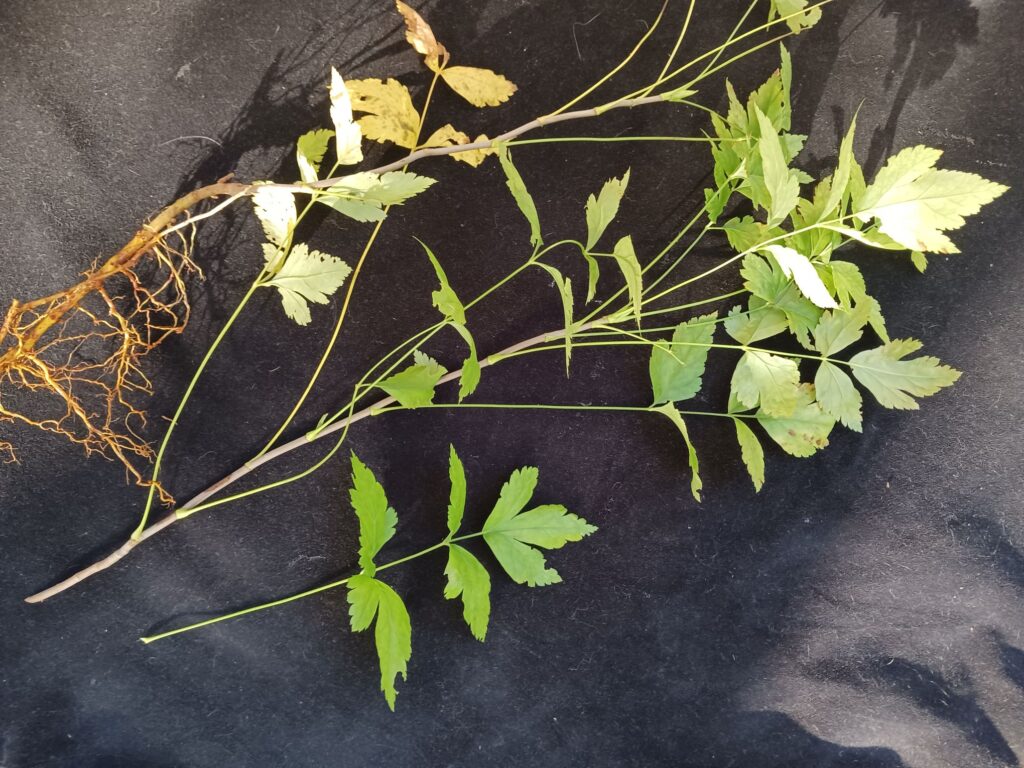By Lee Ann Simon
For most people, the approximately 4,000 plant species growing in North Carolina appear as a green blur. Yellowroot, though common along streams, rivers, and other wet areas throughout the state, is seldom noticed by those who pass by it. However, it performs several important environmental functions, and it has a rich cultural history.
I first became acquainted with it when I saw it growing along the banks of the Little River in the Great Smoky Mountains National Park. Later, I noticed it especially when I realized it might be useful for the prevention of streambank erosion. According to Weakley1, Yellowroot is in the monotypic genus Xanthorhiza, which is a member of the Buttercup family (Ranunculaceae). [For more, see Alan Weakley 2023] Yellowroot’s original native range is from Maryland to Texas -widely distributed in the eastern United States. It is offered by some nurseries.
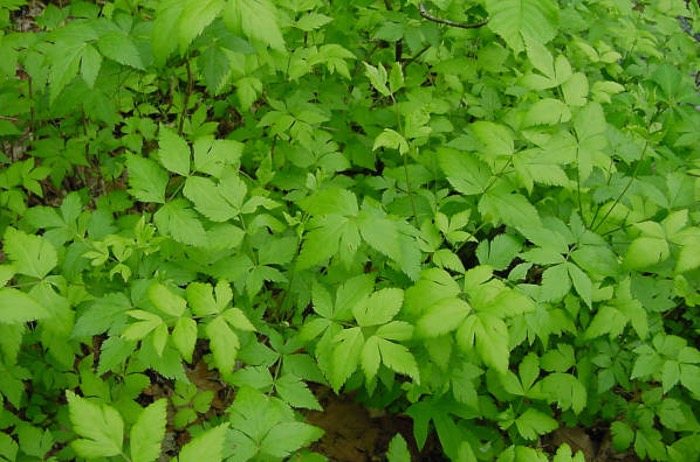
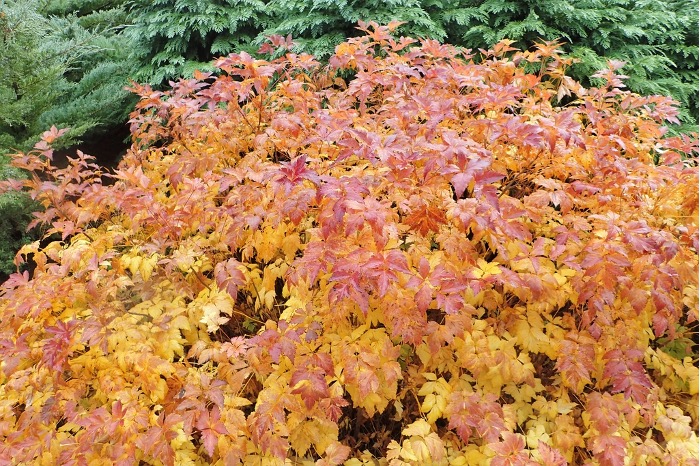
Xanthorhiza simplicissima is a small shrub found in wet areas across North Carolina. The name Xanthorhiza literally is xantho (Greek) for yellow and rhiza for root. Simplicissima refers to the plant’s mostly unbranched stems. The plant’s yellow roots and wood have been a source of yellow dye used by some Indigenous peoples of the Southern Appalachians. A small, deciduous, clonal shrub, attractive and tough, it’s one to three feet tall with inconspicuous flowers and fruit. Its fruits are eaten by birds and small mammals, and the plants provide cover for them. It has alternate, compound leaves that resemble parsley. In the spring, it has drooping panicles of tiny, five-parted flowers with maroon sepals and no petals. Its fruits are about 4mm long with 1-2 seeds.
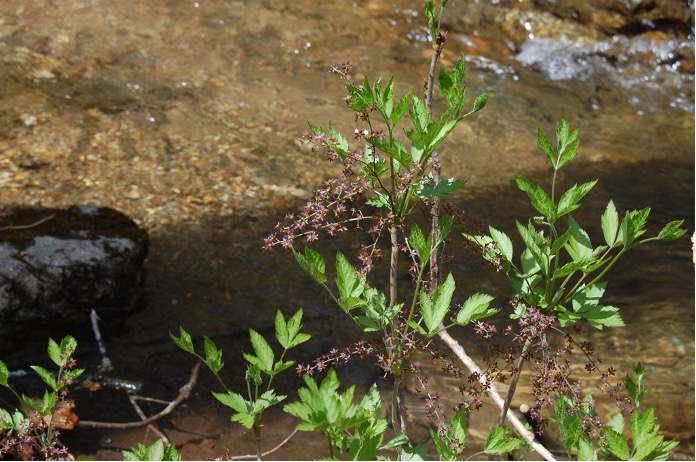

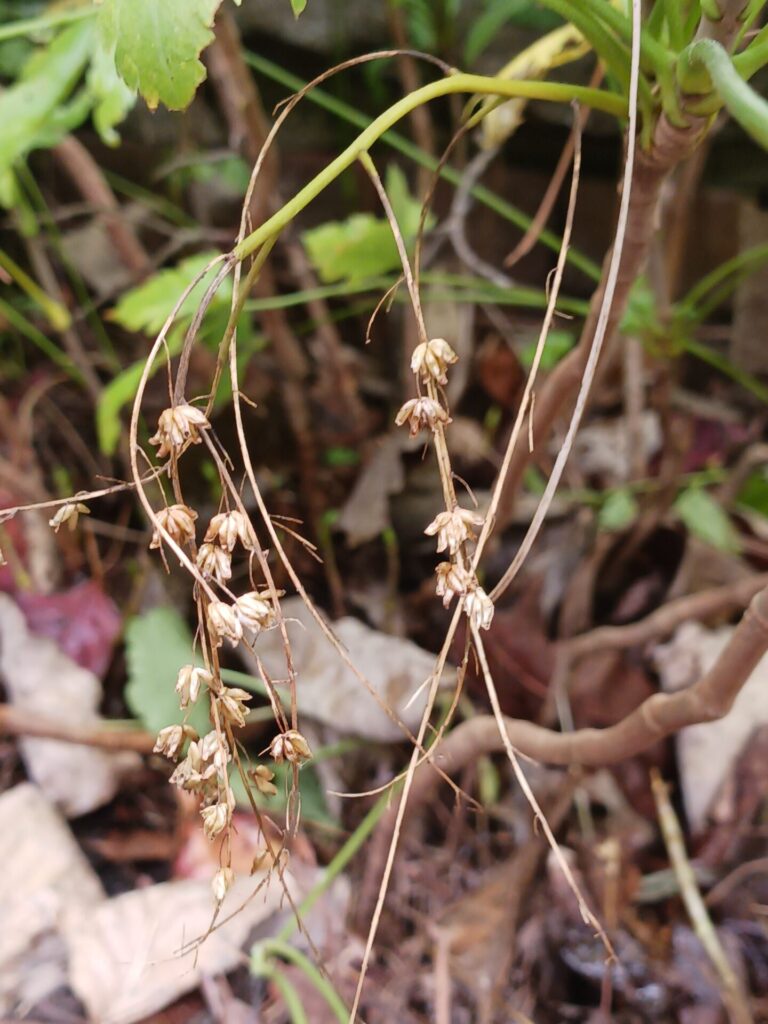
It grows across North Carolina and is found in the mountains, the piedmont, and the coastal plain. I’ve even seen it in the sandhills growing along a streambank. Sometimes, it grows in the rushing water of rivers in rock crevices. When my family visited Sliding Rock in the Pisgah National Forest, we saw it growing along the banks of Looking Glass Creek. As I was speeding down the waterfall, I slid past some growing in the middle of the creek as well.
Yellowroot is a plant that deserves to be more widely used in landscaping and streambank restoration. Because it spreads clonally, it makes a good planting choice for restoration projects, especially streambank restoration. Tolerant of a wide range of soils and moisture conditions, it’s listed as a (Federally defined) facultative wetland plant; it can take having its roots submerged, but it also tolerates mesic conditions and periodic dryness.
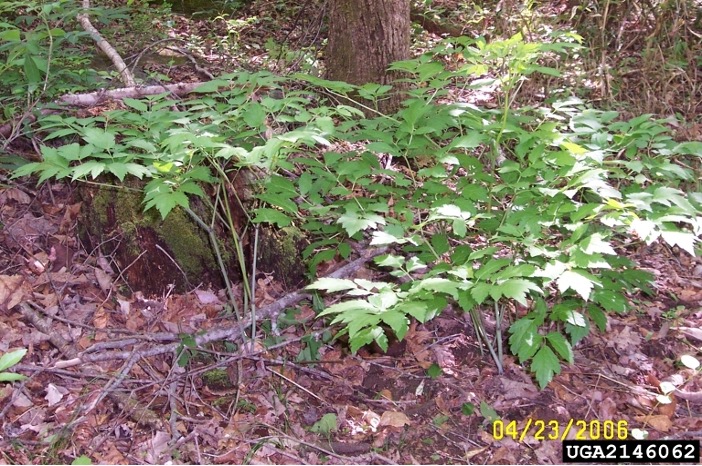
It also would serve as a good ground cover in wet areas. In fact, Mellow Marsh Farm, a native plant wholesale nursery that specializes in wetland plants and wetland habitat restoration, lists the plant in the section where it sells whips and stakes of willow, Silky Dogwood, and other plants commonly used for such purposes. I’ve had some in my yard for years in an area that can be mesic or relatively dry and it remains healthy. In the past, yellowroot has been hard to find at nurseries. When I first moved to North Carolina, the only place that I could find it for sale was at the North Carolina Botanical Garden. Currently, both Mellow Marsh Farms and Rachel’s Native Plants in Pittsboro have them in stock.
Yellowroot has a long history of use as a medicinal plant by some Indigenous peoples of North America as well as African Americans. According to Carson Colenbaugh and Donald Hagan of Clemson University, there are at least 34 documented types of uses of the plant by southern Appalachian tribes. The authors note that after European settlers and enslaved Africans arrived in North America, they and their descendants incorporated its use into their traditions.2 Yellowroot is used both as a medicinal plant and as a dye. It was the most common yellow dye for traditional baskets and feathers as well as for face paint.
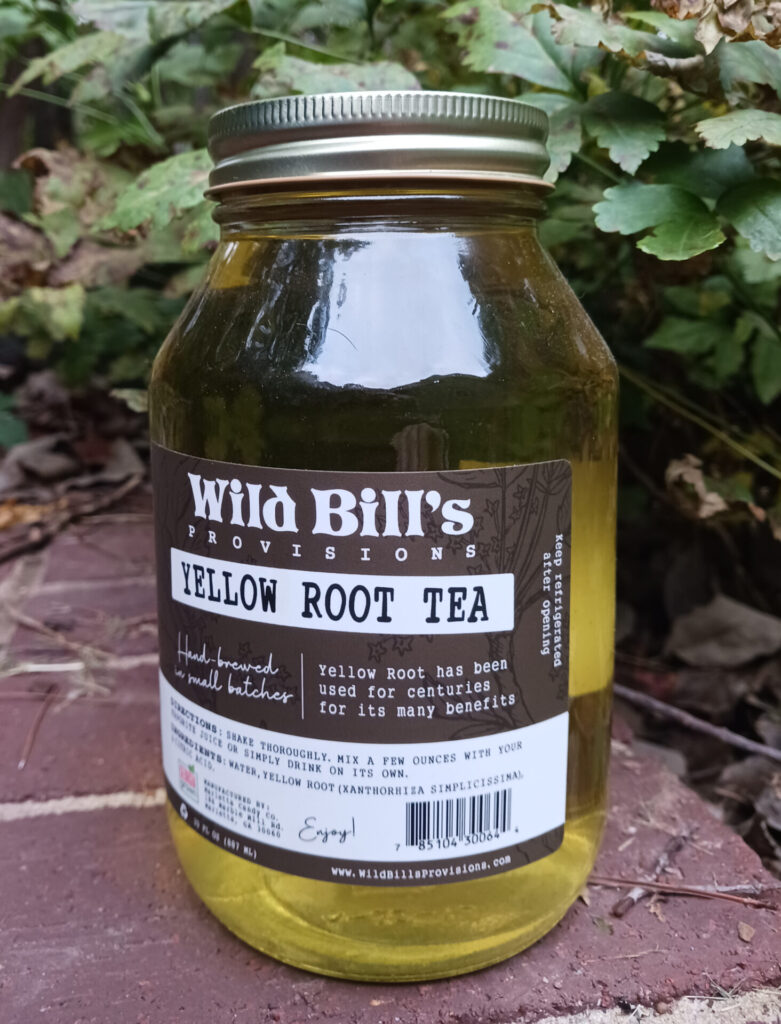
Like many herbs, it was used as a remedy for a wide range of ailments. For example, it was used as a topical treatment for infections such as sore throat, thrush, eye infections, skin sores, and to diminish excessive mucus. Other uses include treatment of heart problems, diarrhea, blood in the urine, cramps, and to induce labor. A friend of mine who lives in Georgia, uses it regularly for cold symptoms and digestive ailments as well as a general tonic. She brought me a jar of Wild Bill’s Yellow Root Tea, which is sold in some grocery stores in the metro-Atlanta area. Yellowroot contains berberine, an alkaloid that has antiseptic and anti-inflammatory properties. According to the National Institutes of Health, there are many studies being conducted on the possible uses of berberine including heart disease, digestive diseases, and Alzheimer’s Disease.
Yellowroot is an attractive small shrub that has many potential uses in landscaping, habitat restoration, and medicine. Now that it is becoming more widely available in the nursery trade, maybe it will take its place with other North Carolina plants used for public and private landscaping projects.
Citations
1Weakley, Alan S., Ludwig, J. Christopher, and Townsend, John E. Flora of Virginia. Fort Worth, Texas:Botanical Research Institute of Texas Press. 2013.
2Natural and Cultural History of Xanthorhiza simplicissima – researchgate. (n.d.). https://www.researchgate.net/publication/353667383_Natural_and_Cultural_History_of_Xanthorhiza_simplicissima, Colenbaugh and Hagan
References
Bender, Steven, editor. The Southern Living Garden Book. Birmingham, Alabama: Oxmoor House, 1998.
Lady Bird Johnson Wildflower Center – the University of Texas at Austin. (n.d.). https://www.wildflower.org/xanthorhiza
Native American Ethnobotany Database. BRIT. (n.d.). http://naeb.brit.org/uses/search/?string=xanthorhiza
Natural and Cultural History of Xanthorhiza simplicissima – researchgate. (n.d.)., Colenbaugh and Hagan
Radford, Albert E., Ahles, Harry E., and Bell, C. Richie. Manuel of the Vascular Flora of the Carolinas. The University of North Carolina Press: Chapel Hill, 1983.
Simpson, Michael G. Plant Systematics. Burlington Massachusetts: Academic Press, 2019.
Volunteers, E. M. G., Extension, N. C., It, G. F., & Farms, G. S. (n.d.). Gardening: NC State Extension. NC State Extension News. https://gardening.ces.ncsu.edu/xanthorhiza
Weakley, Alan S., Ludwig, J. Christopher, and Townsend, John E. Flora of Virginia. Fort Worth, Texas:Botanical Research Institute of Texas Press. 2013.
Xanthorhiza simplicissima. Mellow Marsh Farm. (2023, October 15). https://mellowmarshfarm.com/catalog/xanthorhiza-simplicissima/
Xanthorhiza. USDA Plants Database. (n.d.). https://plants.usda.gov/home/plantProfile?symbol=XASI Yellow root. (n.d.). https://medicinalgardens.web.unc.edu/yellow-root/
By Lee Ann Simon
Native Plant News – Winter 2023

Lee Ann Simon studied Botany at the University of Tennessee, Knoxville. She has worked as a biological technician at Uplands Laboratory in the Great Smoky Mountains National Park, the North Carolina Botanical Garden, and the city of Los Angeles, California. She currently resides in North Carolina.
